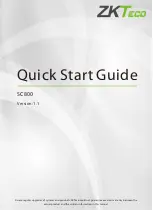
CP381
Introduction
ID 24107, Rev. 01
© 2002 PEP Modular Computers GmbH
Page 1 - 5
1.3
Board Overview
1.3.1
Board Introduction
The CP381 is a 30 channel digital input board. The source of the digital inputs must be a voltage
generator. The board accepts only single-ended voltages up to a maximum of +30V. The input
current is limited to 5 mA over the specified input voltage range.
Input signal processing begins with the presentation of the signal to the front panel connector.
Signal conditioning prior to the signal reaching the DI ProComm controller includes: overvolt-
age protection, ESD, low-pass filtering, inverse polarity protection, defined low and high rang-
es, current limitation, optoisolation and buffering.
After signal conditioning, all parallel digital data is routed to the DI ProComm controller, where
the control and status registers are set.
The DI ProComm controller controls the interface with the CompactPCI bus and the dedicated
software.
Input signal types and ranges are as follows:
•
Edge frequency:
•
Maximum 10 kHz
•
Voltage Ranges:
•
High range: +11V to +30V (+24V nominal)
•
Low range: -3V to +5V
•
Signal is single-ended
Output data
:
The following outputs are routed from the DI ProComm controller to the CompactPCI bus:-
•
Input data for all channels as a 32-bit value (each bit from 0 - 29 represents the status of
the respective input channel)
•
Flag set information from the control and status registers
•
Interrupts
1.3.2
Board Specific Information
Specific board components involved in the signal conditioning and data handling processes
are:
•
One front panel connector (62-pin, female, D-sub type)
•
30 channels of input signal conditioning
•
Optoisolation for each channel
•
One FPGA (the DI ProComm controller)
•
One CompactPCI bus connector (J1, board to backplane, 132-pin, female, six row)
•
JTAG/ISP onboard programming connector (10-pin, male, dual row)
•
One EEPROM (CapROM)
















































